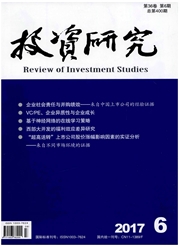

 中文摘要:
中文摘要:
本文从事后的角度研究企业出现财务困境后银行贷款的动态调整。实证研究发现:(1)银行的事后监督主要通过调整长期借款实现;(2)银行调减困境公司的长期借款,对国有和民营公司的调减幅度差异不显著,国有企业在陷入困境当年有一定的信贷优惠,但是随着时间的推移优惠逐渐消失;(3)长期借款的调整是一次调整,而不是逐年调整,且调整的方向和幅度与公司财务指标显著相关;(4)长期借款调增的困境公司,其EBIT增长率明显高于调减或调平的公司。本文的研究结果表明,对首次陷入财务困境的公司,我国银行通过调整长期借款增强了对债务人的约束,已发挥其相应的公司治理作用。
 英文摘要:
英文摘要:
This paper discusses the dynamic adjustment of distressed firms' bank loans in an ex post perspective, and our empir- ical study finds that: (1)The post-supervision of Chinese commercial bank is carded out mainly through the adjustment of long-term loans; (2)Banks reduce the long-term loans of distressed companies, and such adjustment doesn't differ significantly from state-owned to private companies;(3)Adjustments of long-term loans are made once instead of year-by-year, having a sig- nificant correlation with financial indicators; (4)Distressed companies with their long- term loans reduced or unchanged get a lower rate of EBIT growth compared with those getting increased long-term loans support. In conclusion, for companies falling in financial distress for the first time, adjustment of long-term loans enhances Chinese commercial banks' constraint over debt- ors and plays a correspondent role in corporate governance.
 同期刊论文项目
同期刊论文项目
 同项目期刊论文
同项目期刊论文
 期刊信息
期刊信息
